Try some of the following exercises to ease tension. Activities that include long and sweeping patterns, full extension of the limbs, and spiraling gestures through the torso (notably yoga, tai chi, and Feldenkrais) can enhance awareness and foster optimum balance of your body’s major myofascial bands. Many dance styles, as well as racquet sports and ball sports, which require jumping, leaping, throwing, and reaching, have similar benefits.
“The Worlds Greatest Stretch”
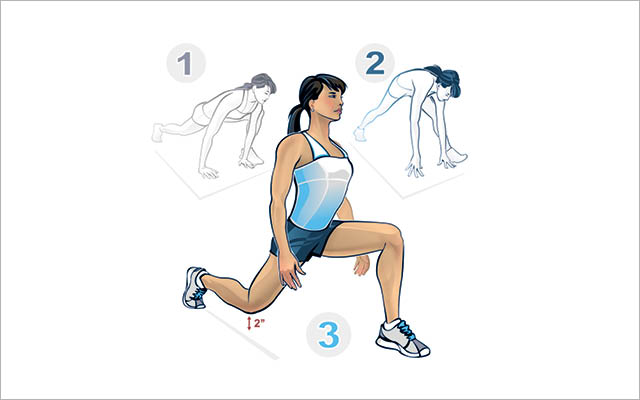
This stretch, recommended by Sue Falsone, MS, PT, SCS, mobilizes myofascial bands in the front of the hips as well as the back of the body, head to toe.
- Stand and step forward with your left foot into a deep lunge position. Lean forward and place both hands on the floor, with your left knee outside your left arm and shoulder. Keeping your right leg straight and your back long (aim for a perfect line between your head and right heel), gently press your left elbow against the inside of your left knee for a two-count.
- Keeping your right leg fully extended, slowly straighten your left leg as much as possible, rocking your weight back onto the heel of your front foot. Hold for a two-count.
- Rebend your left knee and lift your torso from the bent-over position, assuming a high lunge position with your right knee floating 2 inches off the floor. Hold for a two-count, then step forward with your right foot and repeat on the opposite side. Perform six to eight repetitions on each side.
Side Bend With Rolling Feet
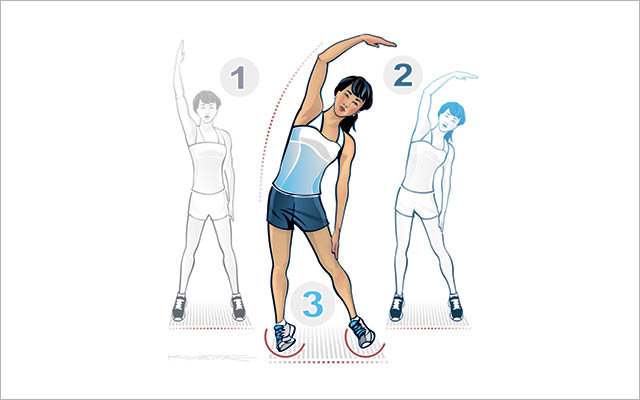
Although the standard side bend has traditionally been used as a stretch for the lats and obliques (the muscles on the sides of your torso), rolling the feet in this position — which inevitably intensifies the stretch — extends a unified fascial band along the side of the body from the outside edges of your feet all the way up to your ear.
- Stand upright with your feet parallel and just over shoulder width apart. Keeping your hips and shoulders square, reach your right hand directly overhead.
- Perform a side-bend to your left, reaching your right arm over your head and as far to your left as possible.
- Once in this position, roll both feet to the right, shifting your weight onto the outside edge of your right foot and the inside edge of your left foot. Hold for 10 seconds and repeat on the opposite side.
A Better Hip Mobilization
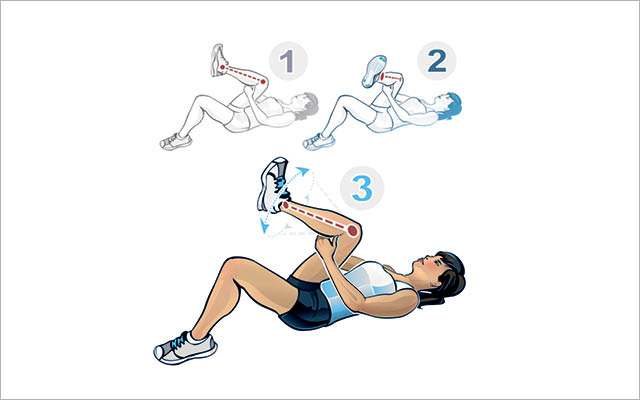
Many people stretch their hips and hamstrings in one plane of motion — straight forward (as in touching your toes). Because the fascia runs through and around the entire musculature, try instead stretching in a multiplanar way: up, down, forward, back. Avoid the pain threshold; if your body feels pain, the protective mechanisms of your joints will tighten and shorten muscles as you stretch.
- Lie flat on your back on a firm surface. Bend both knees with feet flat on the floor. Lift your right leg in the air and take hold of your leg with both hands — behind your knee, on the outsides of your thigh, or wherever feels comfortable.
- Keeping your neck relaxed and your head on the floor, gently pull your leg toward your upper body until you feel a gentle stretch.
- Maintaining your hold on the leg, gently rotate your foot, circling your leg to the outside, then to the inside of your torso. Continue to experiment with easy movements of your leg, in whatever range and plane of motion feels comfortable, for about two minutes; then repeat on the other side.
Tennis Ball Rollout
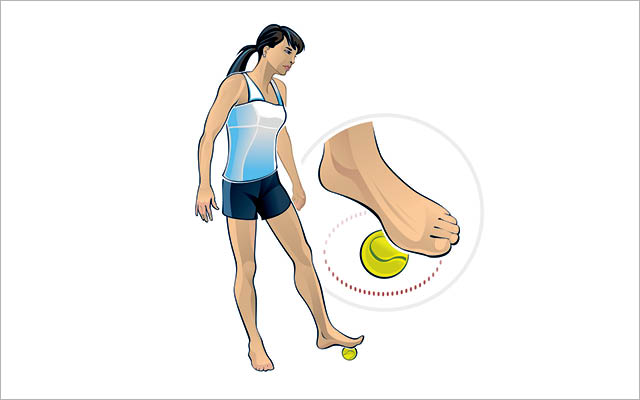
Rolling out the bottoms of your feet on a tennis or other type of ball will loosen the fascial band that runs from there to your head.
Before you start, perform a standing toe-touch in bare feet, with your knees soft, and note how far you can reach without straining. Now, stand tall and carefully roll the bottom of one foot over a tennis ball, paying particular attention to spots where your foot is tender or sensitive. Hold on to something stable for balance if necessary. Continue for at least one minute, then repeat on the other foot. Repeat the standing toe-touch test and note how much farther you can reach.
This originally appeared as “The Web of Life” in the November 2011 print issue of Experience Life.
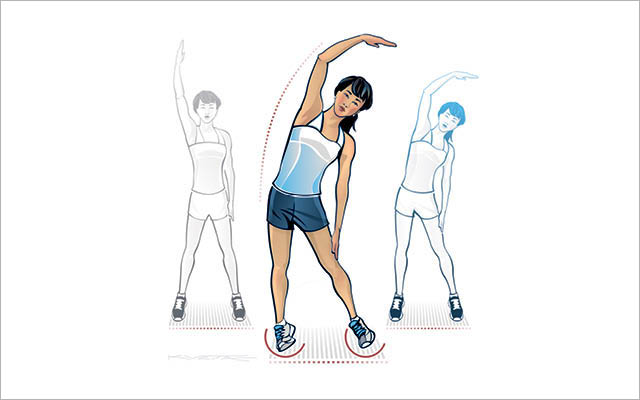
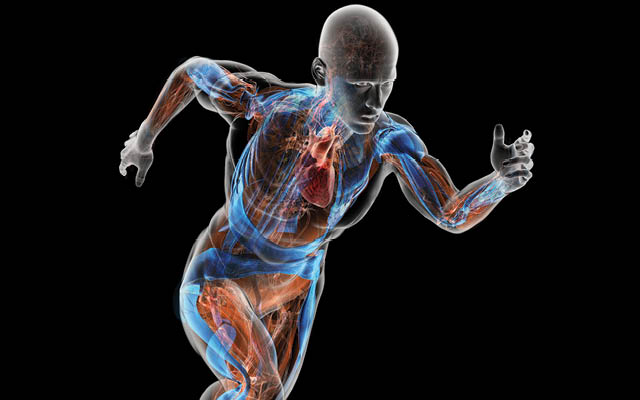
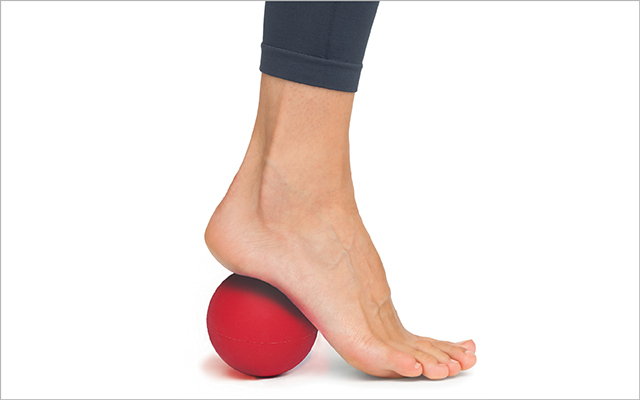

This Post Has 0 Comments